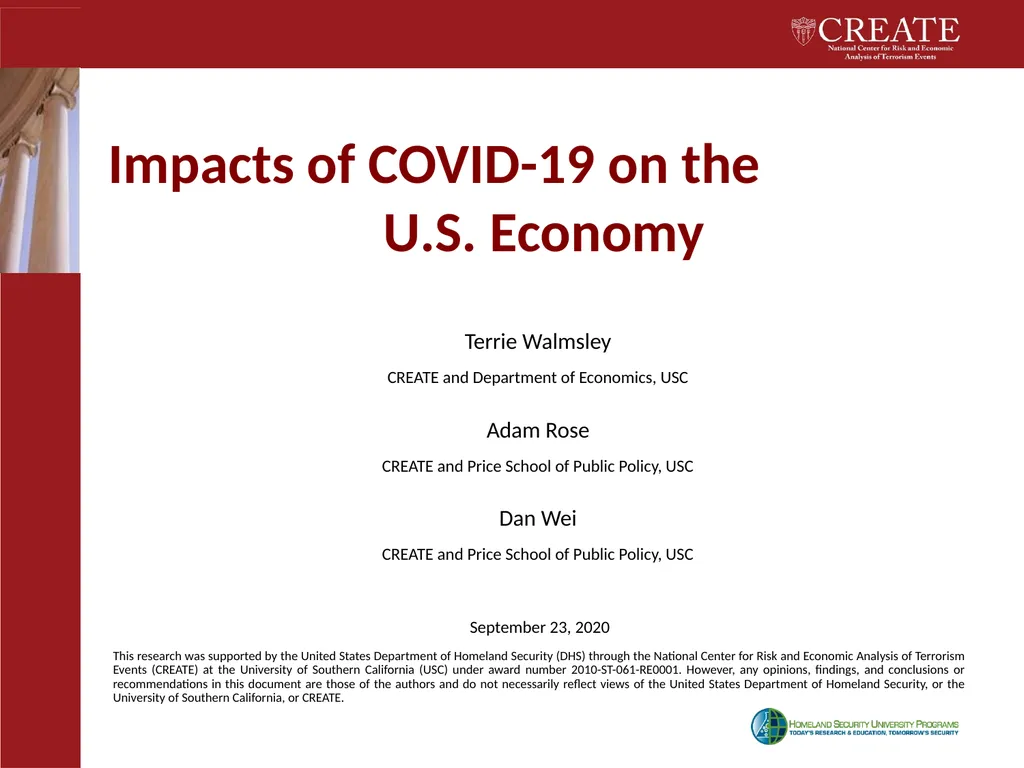
Impacts of COVID-19 on the U.S. Economy Terrie
Author: alexa-scheidler | Published: 2025-05-28
Description: Impacts of COVID-19 on the U.S. Economy Terrie Walmsley CREATE and Department of Economics, USC Adam Rose CREATE and Price School of Public Policy, USC Dan Wei CREATE and Price School of Public Policy, USC September 23, 2020 Background
Download Presentation
Download the PPT/PDF: Download
Transcript:
Loading transcript…